Trace the origins of biblical lands to their current names and discover the fascinating history hidden within modern maps.
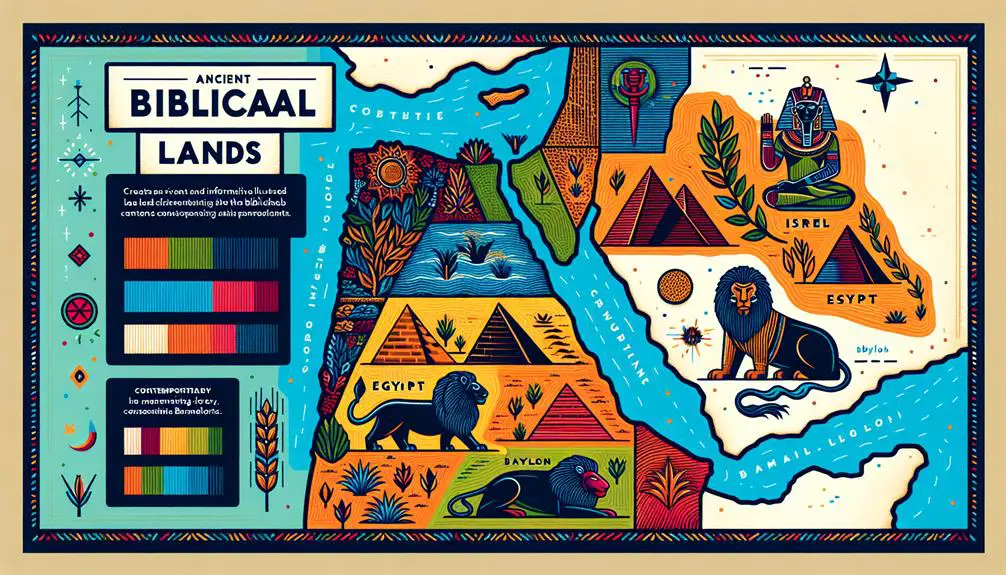
Countries in the Bible and Their Present Names
Have you ever wondered how the ancient lands mentioned in the Bible correspond to our modern map? You're not alone.
As someone interested in both history and geography, you'll find the transformation of countries from biblical names to their present identities fascinating. From Babylon's evolution into Iraq to the unchanging name of Egypt, each transition tells a story of civilizations, conquests, and cultural shifts.
Let's embark on a journey through time, where you'll uncover the historical threads that connect our past to the present, and perhaps, gain a new perspective on the world we live in today.
Key Takeaways
- Ancient Babylon's rich heritage and legal systems have significantly influenced modern Iraq's culture and architecture.
- Canaan's transformation into the modern state of Israel reshaped the Middle East's geopolitical landscape, impacting monotheistic beliefs.
- The transition from Ancient Persia to Iran reflects a deep historical and cultural continuity, maintaining its influence in the region.
- Philistia's evolution into Palestine and Assyria's legacy in modern Syria showcase the enduring impact of ancient civilizations on today's geopolitical identities.
Babylon to Iraq
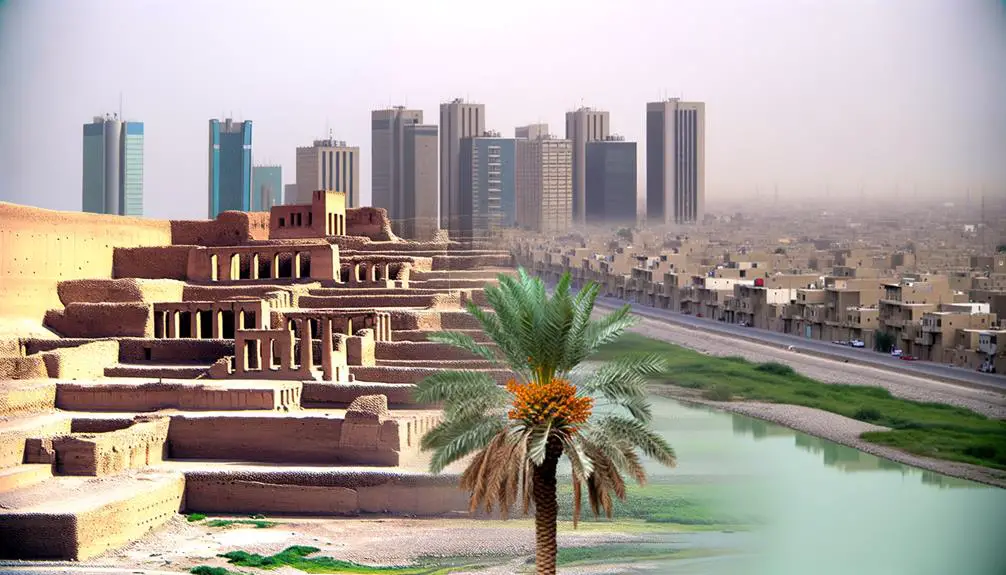
The ancient city of Babylon, once a major power of the Mesopotamian world, now lies within the modern borders of Iraq. You're delving into a realm where history and modernity converge, shedding light on how the Babylonian culture has left indelible marks on the present. Babylon's influence is profound, deeply woven into the fabric of today's Iraqi culture, from its legal systems to its architectural innovations.
At its zenith, Babylon was a center of learning, trade, and the arts, famed for its majestic structures, including the legendary Hanging Gardens, one of the Seven Wonders of the Ancient World. Though the existence of the Hanging Gardens remains a topic of debate among historians, their symbolic significance can't be understated. They represent the zenith of Babylonian engineering and a testament to the human endeavor to create beauty and sustenance in the midst of arid landscapes. This ambition mirrors Iraq's modern efforts to blend its rich heritage with contemporary advancements.
Babylonian culture, with its pioneering advancements in mathematics, astronomy, and law, laid the foundations for much of Western civilization's progress. The Code of Hammurabi, for instance, is one of the earliest and most complete written legal codes, a precursor to today's legal systems worldwide.
As you explore Iraq today, the echoes of Babylon's grandeur are palpable. The ancient city's ruins serve as a reminder of the transient nature of power and the enduring legacy of culture. Babylon's transformation into modern-day Iraq is a testament to the resilience and continuity of human civilizations, bridging the past with the present in a narrative that's as complex as it's captivating.
Canaan to Israel
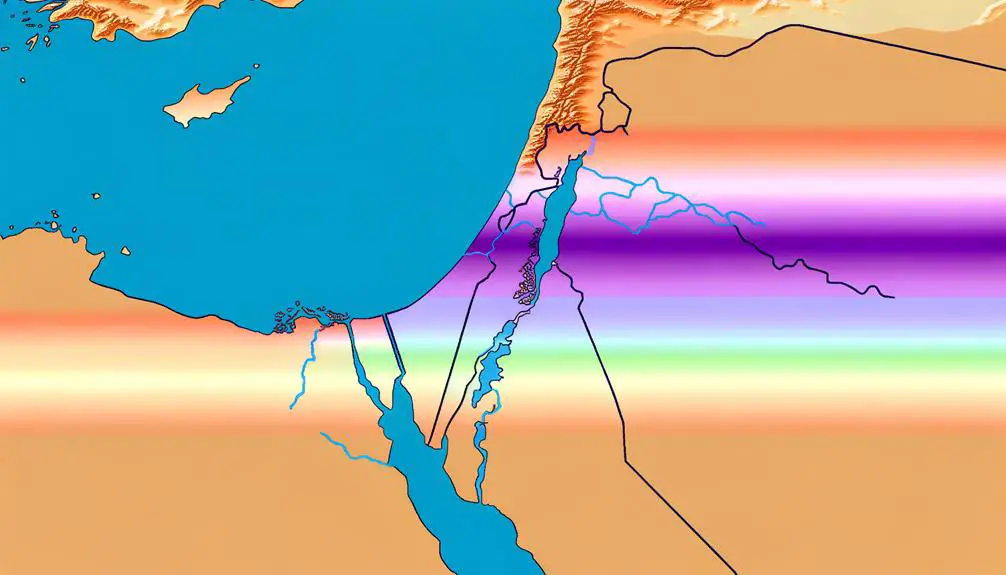
You must understand that Canaan, as mentioned in biblical texts, represents a region of significant historical depth, serving as the backdrop to numerous ancient narratives.
Its transformation into what's known today as Israel marks a pivotal shift, reflecting both ancient claims and modern political realignments.
This transition from Canaan to Israel encapsulates a complex interplay of archaeological findings, historical events, and socio-political developments that have shaped the region's identity over millennia.
Canaan's Historical Context
Diving into the historical context of Canaan, it's crucial to understand how this ancient region evolved into the modern state of Israel. Key to this transformation was the Canaanite religion and the strategic trade routes that crisscrossed the area. The Canaanites were deeply religious, worshipping a pantheon that influenced later monotheistic beliefs. Their trade routes facilitated cultural exchanges and economic prosperity, setting the stage for the emergence of Israel.
Aspect |
Canaan |
Emotion Evoked |
|---|---|---|
Religion |
Rich, polytheistic practices |
Awe, curiosity |
Trade |
Bustling, cross-cultural |
Wonder, admiration |
Transition |
From Canaanite to Israelite |
Surprise, intrigue |
Cultural Exchange |
Flourishing arts and knowledge |
Inspiration |
Legacy |
Foundation for modern Israel |
Respect, reverence |
This table encapsulates the essence of Canaan's historical context, highlighting its significant contribution to the birth of Israel.
Israel's Modern Emergence
From Canaan to Israel, this transformation marks a pivotal moment in history, shaping the geopolitical landscape of the modern Middle East. The discovery of the Dead Sea Scrolls illuminated the ancient roots of this land, underscoring its deep historical and religious significance.
These texts, found near the shores of the Dead Sea, provide vital insights into the cultural and religious practices of early Jewish communities, bridging the gap between ancient traditions and the contemporary state of Israel.
Jerusalem's significance, both as a spiritual center and a political capital, underscores the continuity and change within this region. As Israel emerged in the 20th century, it became a focal point of international attention, embodying the complex interplay of history, religion, and politics that continues to define the Middle East today.
Persia to Iran
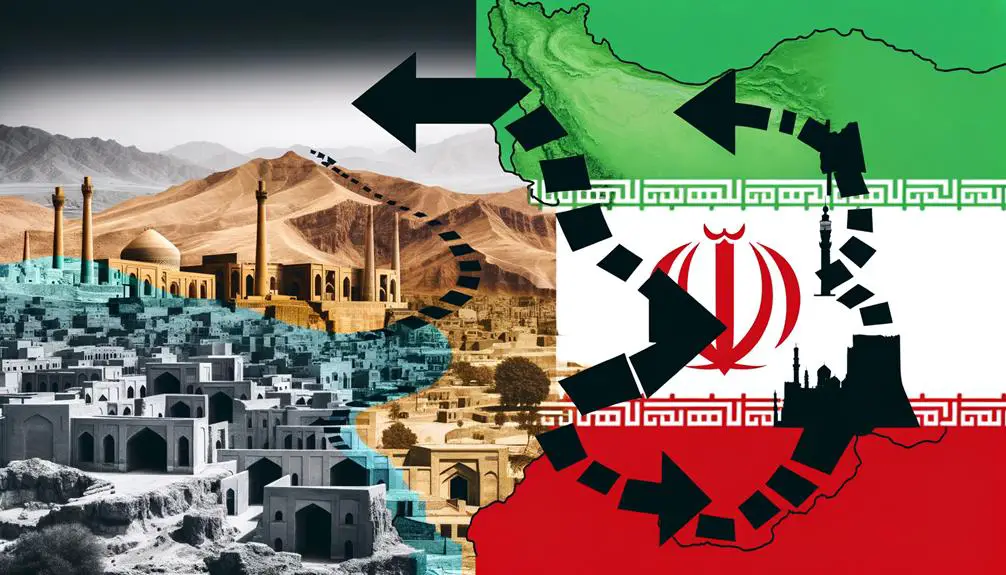
You'll find that ancient Persia, known for its expansive geography, underwent significant transformations leading to its present-day name, Iran.
The timeline of this name change reflects both internal dynamics and external influences, marking a pivotal shift in the region's identity.
Understanding modern Iran's heritage requires examining these historical layers, revealing a rich tapestry of cultural and political evolution.
Ancient Persia's Geography
Ancient Persia, now known as Iran, once sprawled across a vast and diverse geographical landscape that significantly influenced its historical and cultural development. Under the rule of Cyrus the Great, the empire expanded, encompassing territories that demanded varied administrative and military strategies. The Zoroastrian religion, central to Persia's identity, thrived within this expansive geography, shaping the spiritual and social fabric of the empire.
Key geographical features included:
- The Zagros Mountains, providing natural defense and influencing settlement patterns.
- The Persian Gulf, facilitating trade and cultural exchanges.
- The vast deserts, impacting travel and communication.
These elements not only defined the physical boundaries of Ancient Persia but also played a pivotal role in its economic, political, and cultural evolution, laying the groundwork for modern Iran.
Name Change Timeline
How did the ancient empire known as Persia evolve into the modern nation-state of Iran we recognize today? This transformation didn't happen overnight but was the result of a series of historical events, each underscored by a commitment to historical accuracy and geographic relevance. The name change from Persia to Iran reflects a significant shift in national identity, closely tied to the lands and peoples of ancient times.
Year |
Event |
|---|---|
1935 |
Official global recognition of Persia as Iran |
1959 |
Both "Persia" and "Iran" are declared acceptable by the government |
Modern Day |
"Iran" is predominantly used internationally |
This timeline highlights the key moments in the evolution of Persia's name, underlining the importance of both historical and geographic factors in shaping the country's modern identity.
Modern Iran's Heritage
Delving into modern Iran's heritage reveals a rich tapestry of cultural and historical continuity from its days as Persia, underscoring the profound impact of its ancient civilization on today's Iranian identity. The transformation from Persia to Iran isn't merely in name but embodies the evolution of a society deeply rooted in the traditions of its forebears.
- Zoroastrian Influence: This ancient religion, once the state faith of Persia, has left an indelible mark on Iranian culture, from festivals to moral philosophy.
- Cyrus's Edict: This landmark decree not only exemplified the Persian Empire's approach to governance but continues to influence Iranian societal norms and legal principles.
- Architectural Continuity: From the ruins of Persepolis to contemporary Iranian cities, architectural elements reflect a lineage that bridges ancient Persia and modern Iran, showcasing the enduring legacy of Persian art and engineering.
Philistia to Palestine
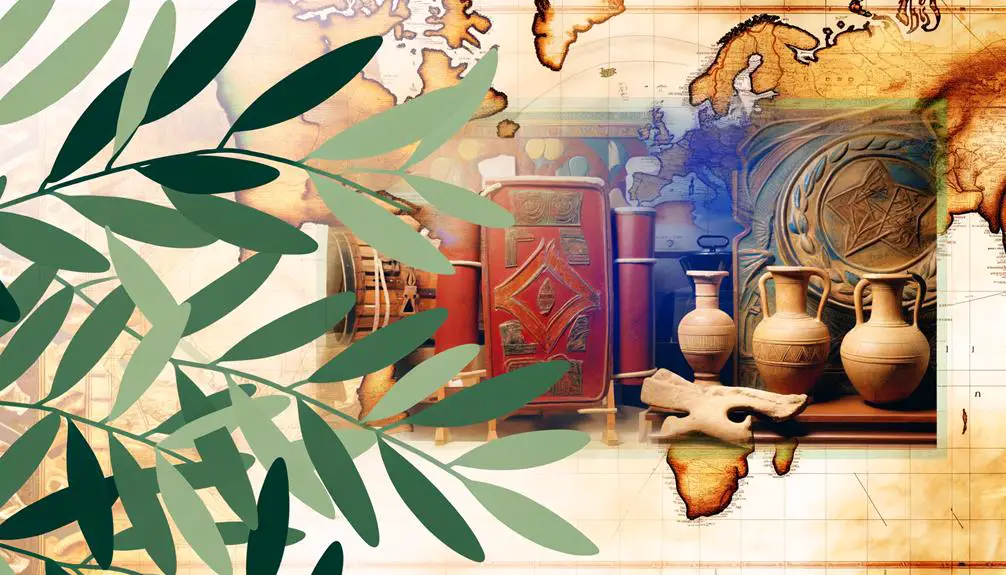
In the context of biblical geography, Philistia's territory now significantly overlaps with what is modern-day Palestine. The transformation from Philistia to Palestine is not merely a change of name but reflects a profound evolution in the region's demographic, cultural, and political landscapes. Philistine culture, once dominant in the coastal areas of the eastern Mediterranean, has left an indelible mark on the historical and archaeological record, particularly around Gaza, which was one of the major cities of the Philistines.
The shift from Philistia to Palestine encapsulates a series of historical events, migrations, and cultural integrations. Today's Palestine, while geographically echoing the ancient land of Philistia, is imbued with layers of history that extend far beyond the era of the Philistines. Understanding this transformation requires delving into aspects such as the Gaza significance in both ancient and modern contexts, which serves as a bridge connecting the historical narratives of these lands.
Aspect |
Significance |
|---|---|
Philistine Culture |
Rooted in ancient maritime prowess, contributing to the cultural and technological advancements in the region. |
Gaza Significance |
Historically a Philistine stronghold; today, a focal point in the Palestinian territory, symbolizing resilience and historical continuity. |
Territorial Overlap |
Philistia's ancient borders largely coincide with modern-day Palestine, encapsulating a rich tapestry of historical epochs. |
Cultural Evolution |
From Philistine to Palestinian identity, showcasing a dynamic interplay of cultures across millennia. |
This analysis not only highlights the continuity of human settlement and cultural evolution in this region but also emphasizes the complex layers of history that define the identity of modern-day Palestine.
Assyria to Syria
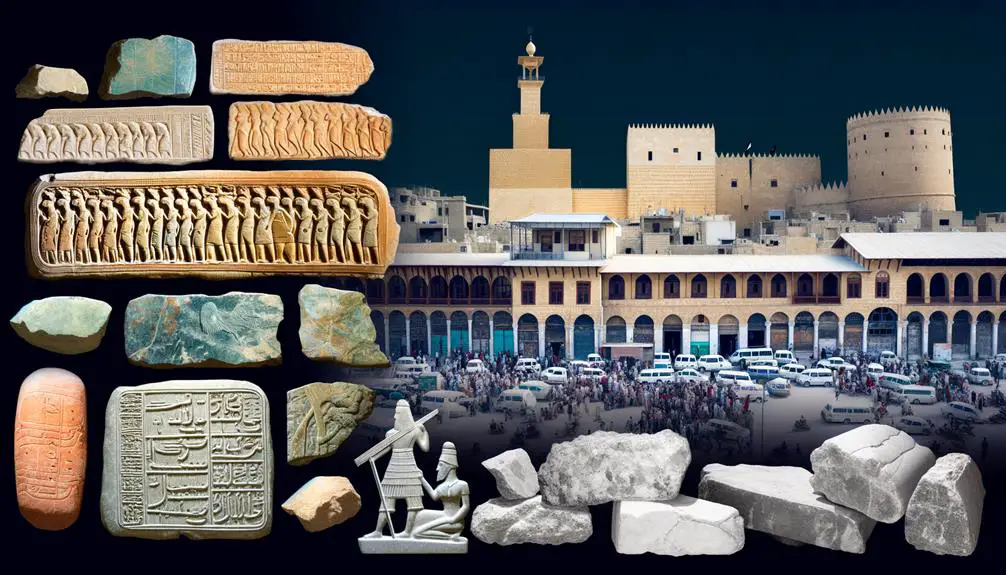
Reflecting on the ancient world, you'll find Assyria's expansive empire has evolved into what we now recognize as Syria, a country with a deep historical lineage and cultural complexity. The transformation from the Assyrian Empire, known for its military prowess and architectural innovations, to the modern state of Syria is a journey through time, marked by significant events and shifts in power dynamics.
The decline of the Assyrian Empire set the stage for the rise of various successor states, including the Neo-Babylonian Empire and, eventually, the Achaemenid Empire. However, the cultural and political legacies of Assyria have lingered, influencing the region's development.
- The Assyrian Empire's decline was a complex process influenced by internal strife, economic difficulties, and relentless warfare against emerging powers.
- The emergence of Syria as a distinct entity reflects a long history of conquests, cultural exchanges, and the adaptation of ancient legacies into a modern context.
- The Syrian Civil War, a recent chapter in Syria's history, underscores the ongoing struggle within the country, echoing the turbulence that has characterized the region for millennia.
Syria's current landscape is a testament to its rich historical tapestry, woven from the threads of ancient empires, including the Assyrians. The enduring influence of Assyria's architectural, administrative, and cultural achievements is evident in Syria's identity today. As you delve deeper into this transformation, you'll appreciate the intricate journey from the ancient Assyrian Empire to the contemporary Syrian state, shaped by centuries of change, conflict, and resilience.
Moab to Jordan
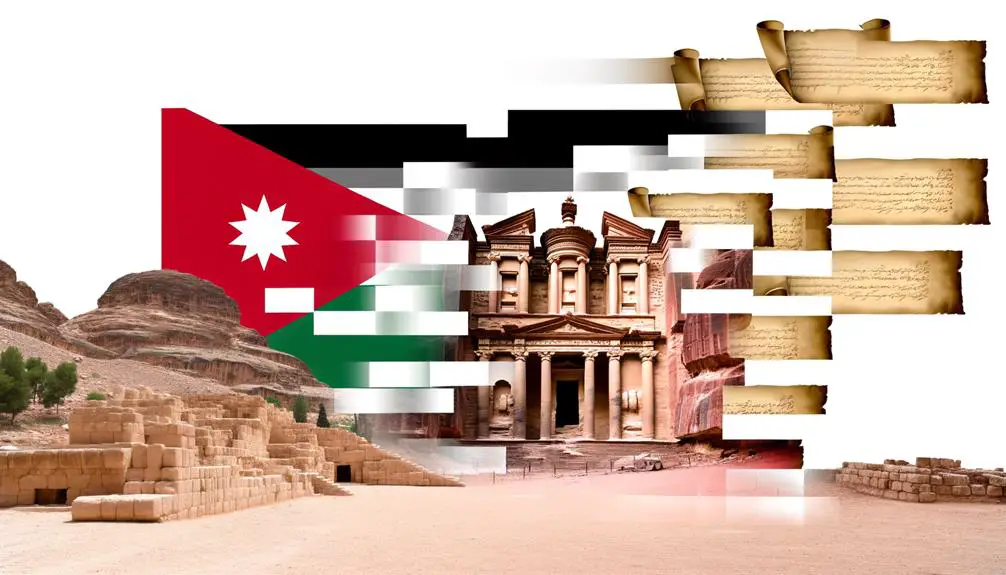
Tracing the lineage of modern Jordan reveals its origins in the ancient land of Moab, a transformation marked by centuries of conquests and cultural shifts. Moab's geography, primarily located in what's now central and southern Jordan, played a significant role in its historical development and cultural identity. Bordered by the Dead Sea to the west and the desert to the east, Moab was strategically positioned as a fertile crescent, making it a valuable location for agriculture and trade in ancient times.
The Moabite culture, deeply intertwined with its geographical context, was characterized by its unique language, religious practices, and social structures. Inscriptions and archaeological findings, such as the Mesha Stele, provide insight into Moabite society, highlighting its complexity and the significant role it played in the region's history.
Over time, Moab experienced numerous changes in power and influence, with its territory and people becoming part of various empires and kingdoms. These shifts led to the gradual integration of Moabite lands into the emerging state of Jordan, a process influenced by historical events and the evolving political landscape of the Middle East.
As you delve into the history of Jordan, understanding its roots in Moab offers a fascinating perspective on the region's past. The legacy of Moab's geography and Moabite culture is embedded in Jordan's rich heritage, illustrating how ancient civilizations continue to shape the identity and development of modern nations.
Macedonia to Greece
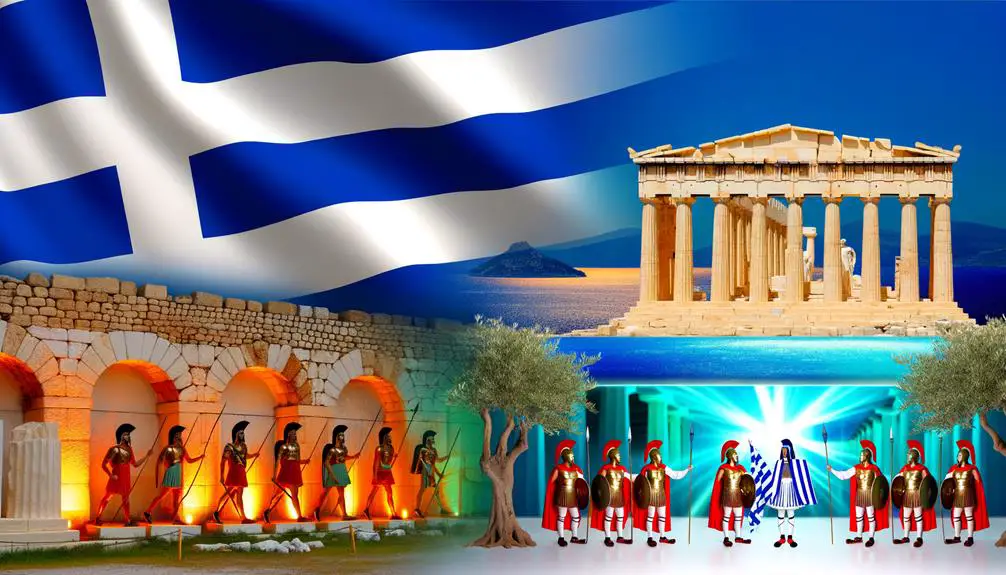
Exploring the ancient lands that shape today's world leads us to Macedonia, an area whose historical and cultural contributions are intricately woven into the fabric of modern Greece. This region, once the heartland of Alexander the Great's empire, played a pivotal role in spreading Greek culture across the known world. Through Alexander's conquests, the ideals, art, and science of ancient Greece were disseminated far beyond their original borders, laying the groundwork for what many consider the Western cultural tradition.
The transformation from the historical Macedonia to the modern nation-state of Greece is a complex journey marked by significant cultural and political shifts. However, the essence of Greek culture, deeply influenced by the achievements of ancient Macedonia, remains a cornerstone of the country's identity.
When considering the impact of Macedonia on modern Greece, key points include:
- Alexander's Conquests: These military campaigns not only expanded the borders of his empire but also served as a vehicle for the spread of Greek culture and language across Asia and Africa.
- Cultural Integration: The blending of Macedonian and classical Greek traditions contributed to a rich, shared Hellenistic culture that influenced subsequent generations.
- Legacy Preservation: Modern Greece honors its Macedonian heritage through educational curricula, museums, and the preservation of archaeological sites that celebrate the achievements of Alexander and his successors.
Understanding the transition from Macedonia to Greece offers insight into the enduring legacy of ancient civilizations on contemporary societies. It highlights the dynamic interplay of culture, history, and identity that continues to shape the modern geopolitical landscape.
Egypt's Timeless Name
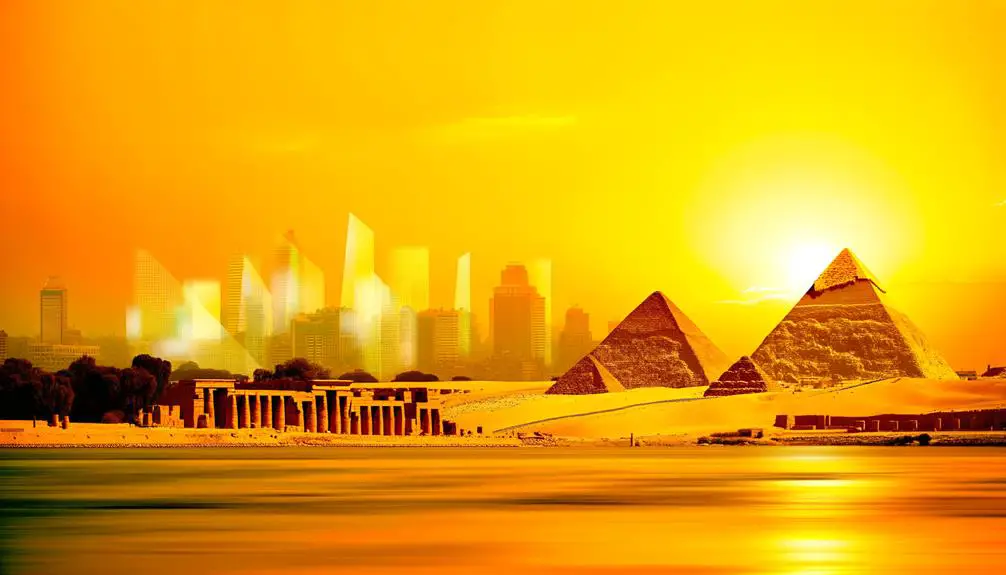
Egypt's name, remarkably constant through millennia, offers a unique lens into the continuity and change within its storied civilization. Unlike many regions mentioned in the Bible, whose names have morphed through conquests, colonialism, or cultural shifts, Egypt has retained its nomenclature, anchoring it firmly in both historical and contemporary contexts. This constancy isn't just a matter of semantic interest; it reflects the enduring legacy of the Egyptian pyramids and the Nile civilization, which have remained symbols of human achievement and resilience.
You'll find that the continuity of Egypt's name mirrors the persistence of its geographical and cultural landmarks. The Egyptian pyramids, for example, stand as testaments to the country's architectural and mathematical prowess, attracting scholars and tourists alike. Meanwhile, the Nile civilization, with its innovative agricultural practices and societal structures, showcases the ingenuity that has allowed Egypt to thrive for thousands of years.
This enduring name signifies more than a mere label. It embodies the rich tapestry of human history that Egypt represents. From the pharaohs' reigns to the present day, Egypt's identity has been shaped by a unique blend of continuity and adaptation. Its ability to maintain its name and heritage amidst the ebb and flow of empires and civilizations is noteworthy.
Thus, when you explore the historical narrative of Egypt, you're not just tracing the evolution of a nation. You're delving into the story of human civilization itself, where the timeless name of Egypt serves as a steadfast marker, guiding you through the annals of history.
Frequently Asked Questions
How Have the Religious Affiliations and Practices in These Regions Evolved From Ancient Times to the Present?
You've observed that religious affiliations and practices have significantly evolved from ancient times. Today, modern pilgrimages and interfaith dialogues highlight the dynamic nature of these changes. These elements are pivotal in understanding how ancient religious practices have adapted to contemporary contexts.
What Are the Major Archaeological Discoveries in These Areas That Have Helped Historians Understand the Biblical Era Better?
You're probably curious about how major archaeological discoveries have illuminated the biblical era. Thanks to advanced excavation technologies and meticulous artifact preservation, historians have pieced together a clearer picture.
From uncovering ancient cities to finding scrolls that shed light on past beliefs and practices, these efforts have significantly expanded our understanding.
It's fascinating how technology and dedication to preservation can bridge the gap between the present and ancient biblical times.
How Do Modern Political Boundaries Affect the Interpretation and Significance of These Ancient Lands in Contemporary Religious Contexts?
You're seeing how modern boundaries reshape ancient lands' significance. Globalization effects blend cultures, making these areas more accessible, while cultural tourism breathes new life into them.
This evolution alters religious context interpretations, as contemporary borders may dilate or compress historical narratives. You're analyzing these changes with a detailed, objective lens, recognizing that today's political landscapes shape how we perceive and engage with these historically and spiritually significant regions.
Are There Any Significant Linguistic Shifts From Ancient Languages Spoken in These Regions to the Languages Spoken Today, and How Do These Shifts Affect the Understanding of Biblical Texts?
You're diving into how languages have evolved from ancient times to now and their impact on biblical texts. Significant linguistic shifts have occurred, affecting your understanding of these sacred writings.
Language preservation plays a crucial role in this context, as does the adaptation of translation methodologies. These shifts demand a detailed, analytical approach to ensure the texts' original meanings are conveyed accurately in today's languages, enhancing your comprehension and connection to these ancient words.
How Do Current Geopolitical Conflicts in Some of These Regions Impact the Preservation of Historical and Biblical Sites?
Current geopolitical conflicts impact both tourism and environmental conservation, affecting historical and biblical sites significantly. As you delve into the issue, you'll notice that tourism, a key source of funding for preservation, dwindles, and conservation efforts suffer.
Moreover, the destruction wrought by conflicts directly threatens these ancient treasures. Analyzing the situation reveals a complex interplay between preserving our past and navigating the challenges of present geopolitical realities.
Conclusion
In your journey through history, you've witnessed the transformation of ancient lands into the countries we know today. From Babylon's evolution into Iraq to the timeless name of Egypt, these changes aren't merely geographical but are imbued with the deep history and cultures that have shaped our world.
Isn't it fascinating how the threads of the past are woven into the fabric of the present? This exploration reveals the dynamic nature of human civilization, constantly evolving yet forever linked to its roots.

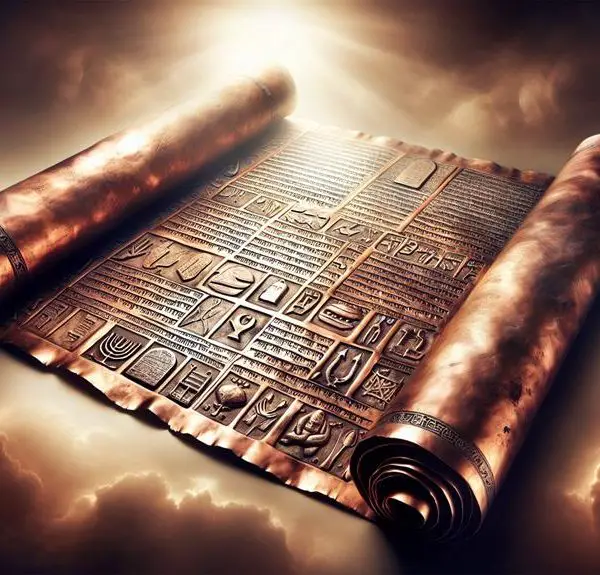

Sign up